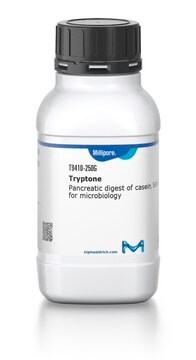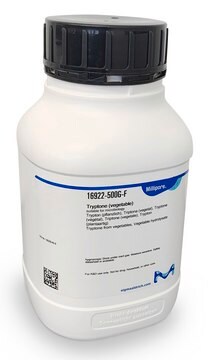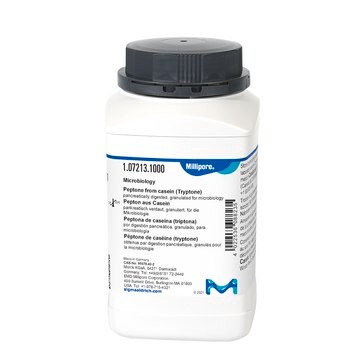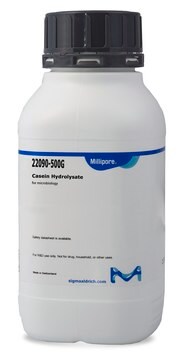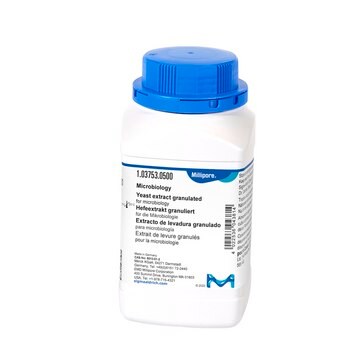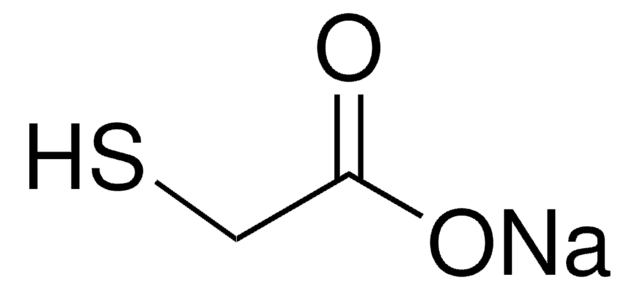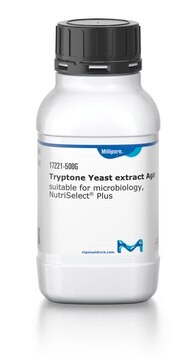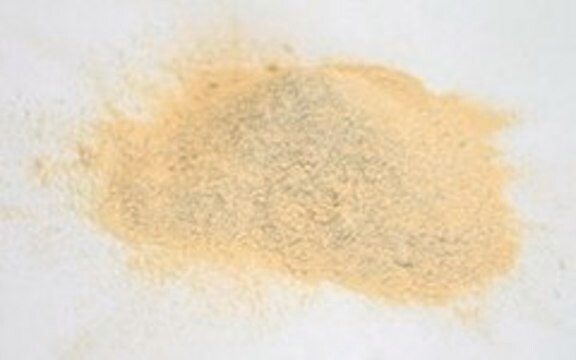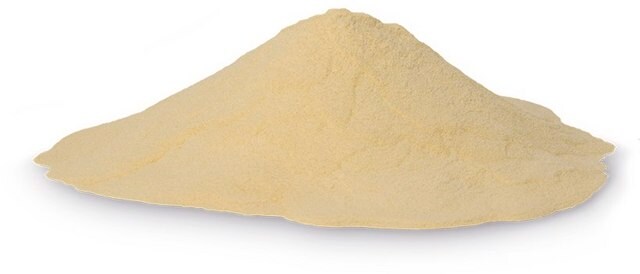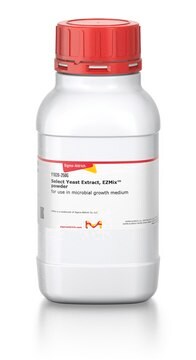T7293
Casein Peptone
Enzymatic digest of casein from bovine milk, 11.0-16.0% total nitrogen, suitable for biotechnology and microbiology
Synonyme(s) :
Peptone from casein, Peptone from casein, Pancreatic digest of casein., Tryptone
About This Item
Produits recommandés
product name
Tryptone, Microbiologically tested.
Source biologique
bovine milk
Niveau de qualité
Forme
powder
Qualité
Microbiologically tested.
Conditionnement
bottle of 1 kg
bottle of 250 g
Dosage de l'azote
11.0-16.0% total
Perte
≤6% loss on drying
Couleur
light yellow
pH
6.9-7.4
Application(s)
food and beverages
microbiology
Adéquation
Escherichia coli
Haemophilus spp.
Lactobacillus spp.
Streptococcus spp.
coliforms
Vous recherchez des produits similaires ? Visite Guide de comparaison des produits
Catégories apparentées
Description générale
Application
- Growth media: Tryptone is frequently used as a source of nutrients in growth media for bacteria, yeast, and other microorganisms. It can be used alone or in combination with other ingredients, such as agar, glucose, and salts, to provide a complete nutrient source for microbial growth
- Enrichment media: Tryptone is often added to enrichment broths to enhance the growth of slow-growing or stressed bacteria in clinical or environmental samples. This is particularly useful for samples where the target microbe is present in low numbers or is difficult to isolate
- Production of recombinant proteins: Tryptone is a component of many bacterial growth media used to produce recombinant proteins. It provides a rich source of amino acids and peptides, which are needed for protein biosynthesis
- It is also used in microbiological testing to determine the minimum inhibitory concentration (MIC) of antimicrobial agents against test organisms.Overall, the diverse and versatile properties of Tryptone make it a valuable tool in various microbiological applications
Notes préparatoires
Code de la classe de stockage
11 - Combustible Solids
Classe de danger pour l'eau (WGK)
WGK 1
Point d'éclair (°F)
Not applicable
Point d'éclair (°C)
Not applicable
Équipement de protection individuelle
Eyeshields, Gloves, type N95 (US)
Faites votre choix parmi les versions les plus récentes :
Déjà en possession de ce produit ?
Retrouvez la documentation relative aux produits que vous avez récemment achetés dans la Bibliothèque de documents.
Les clients ont également consulté
Articles
Culture media provides a habitat with suitable nutrients, energy sources, and certain environmental conditions for the growth of microorganisms. The components of the culture media range from simple sugars to peptones, salts, antibiotics, and complex indicators.
Notre équipe de scientifiques dispose d'une expérience dans tous les secteurs de la recherche, notamment en sciences de la vie, science des matériaux, synthèse chimique, chromatographie, analyse et dans de nombreux autres domaines..
Contacter notre Service technique